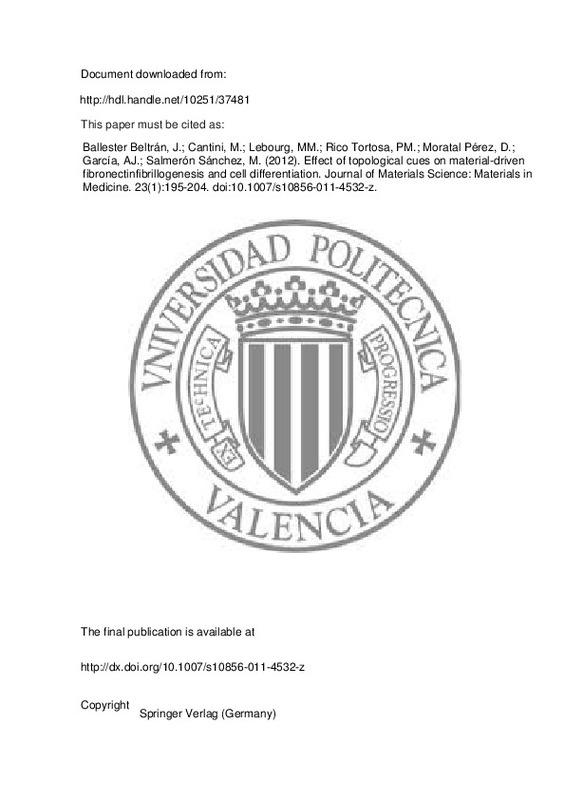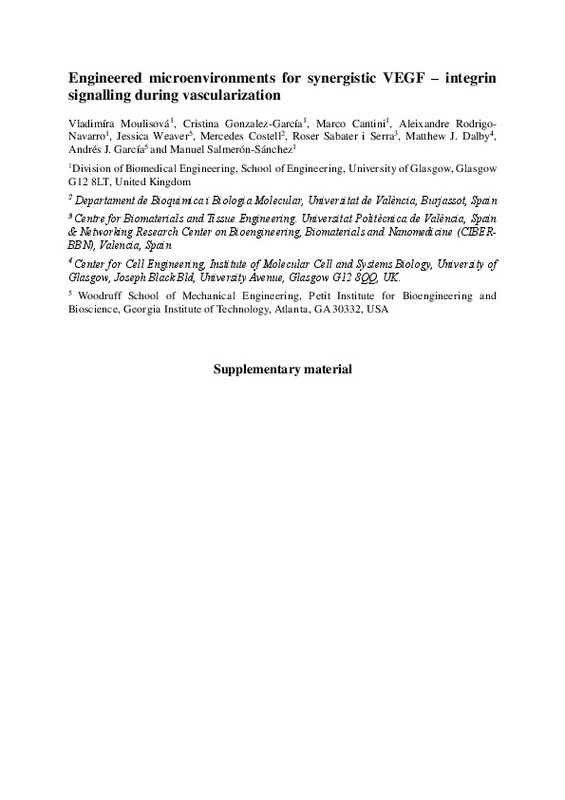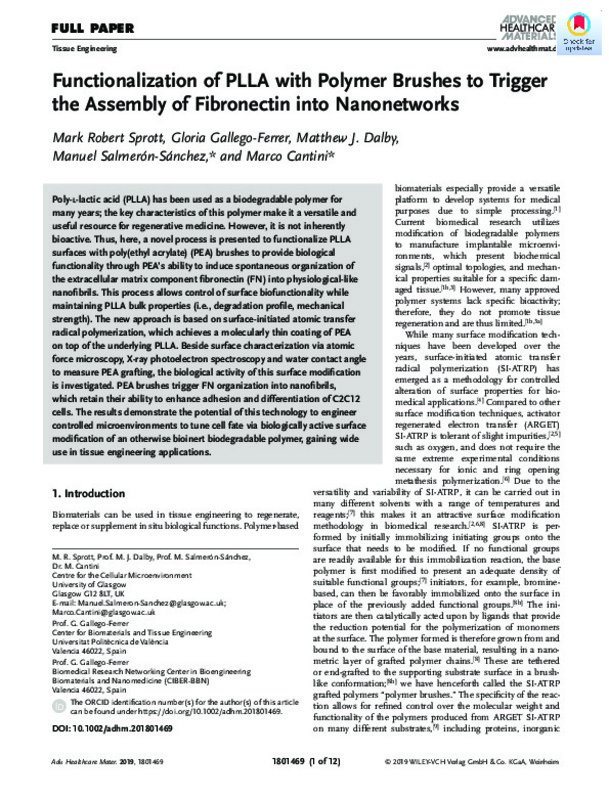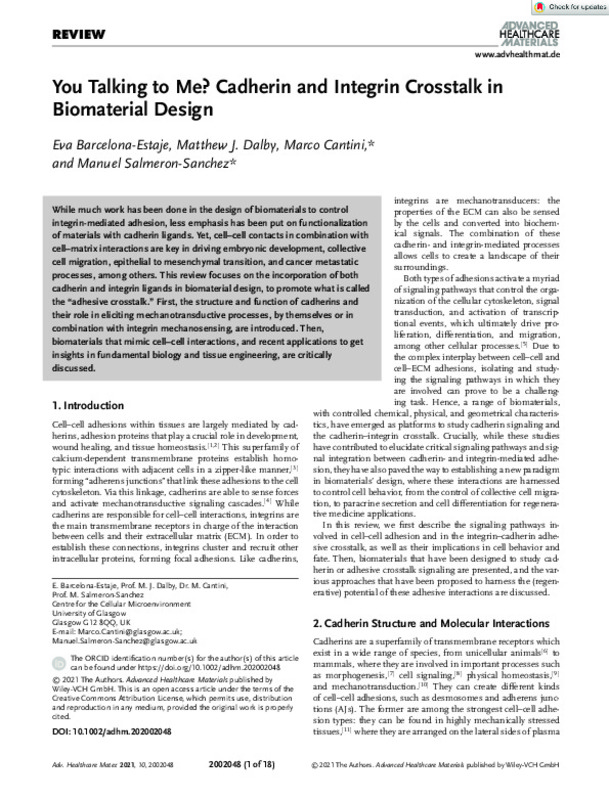

Listar por autor "Cantini, Marco"
RiuNet: Repositorio Institucional de la Universidad Politécnica de Valencia
- RiuNet repositorio UPV
- :
- Listar por autor
JavaScript is disabled for your browser. Some features of this site may not work without it.
Buscar en RiuNet
Listar
Mi cuenta
Ayuda RiuNet
Admin. UPV
Listar por autor "Cantini, Marco"
Mostrando ítems 1-7 de 7
-
Cantini, Marco; Rico Tortosa, Patricia María; Moratal Pérez, David; Salmerón Sánchez, Manuel (Royal Society of Chemistry, 2012)Plasma polymerization was used to produce novel nanometric coatings able to direct fibronectin adsorption and cell response. Using ethyl acrylate as a monomer, we obtain coatings whose chemical composition maintains some ...
-
Ballester Beltrán, José; Cantini, Marco; Lebourg, Myriam Madeleine; Rico Tortosa, Patricia María; Moratal Pérez, David; García, Andrés J.; Salmerón Sánchez, Manuel (Springer Verlag (Germany), 2012-01)[EN] Fibronectin (FN) assembles into fibrillar networks by cells through an integrin-dependent mechanism. We have recently shown that simple FN adsorption onto poly(ethyl acrylate) surfaces (PEA), but not control polymer ...
-
Moulisova, Vladimira; González García, Cristina; Cantini, Marco; Rodrigo Navarro, Aleixandre; Weaver, Jessica; Costell, Mercedes; Sabater i Serra, Roser; Dalby, Matthew J.; García, Andrés J.; Salmerón Sánchez, Manuel (Elsevier, 2017)[EN] We have engineered polymer-based microenvironments that promote vasculogenesis both in vitro and in vivo through synergistic integrin-growth factor receptor signalling. Poly(ethyl acrylate) (PEA) triggers spontaneous ...
-
Sprott, Mark Robert; Gallego-Ferrer, Gloria; Dalby, Matthew J.; Salmerón Sánchez, Manuel; Cantini, Marco (Wiley-VCH, 2019-02-07)[EN] Poly-l-lactic acid (PLLA) has been used as a biodegradable polymer for many years; the key characteristics of this polymer make it a versatile and useful resource for regenerative medicine. However, it is not inherently ...
-
Cantini, Marco; Sousa, Maria; Moratal Pérez, David; Mano, Joao F.; Salmerón Sánchez, Manuel (Royal Society of Chemistry, 2013-02)[EN] In this study, we propose a methodology to obtain a family of biomimetic substrates with a hierarchical rough topography at the micro and nanoscale that span the entire range of wettability, from the superhydrophobic ...
-
González García, Cristina; Cantini, Marco; Moratal Pérez, David; Altankov, George Petrov; Salmerón Sánchez, Manuel (Elsevier, 2013-11-01)Cells assemble fibronectin (FN) into fibrils in a process mediated by integrins. For this process to occur, it is known that the presence of other serum proteins is necessary. However, the individual effect of these proteins ...
-
Barcelona-Estaje, Eva; Dalby, Matthew J.; Cantini, Marco; Salmerón Sánchez, Manuel (Wiley-VCH, 2021-03)[EN] While much work has been done in the design of biomaterials to control integrin-mediated adhesion, less emphasis has been put on functionalization of materials with cadherin ligands. Yet, cell-cell contacts in combination ...
Mostrando ítems 1-7 de 7

Universitat Politècnica de València. Unidad de Documentación Científica de la Biblioteca (+34) 96 387 70 85 · RiuNet@bib.upv.es







